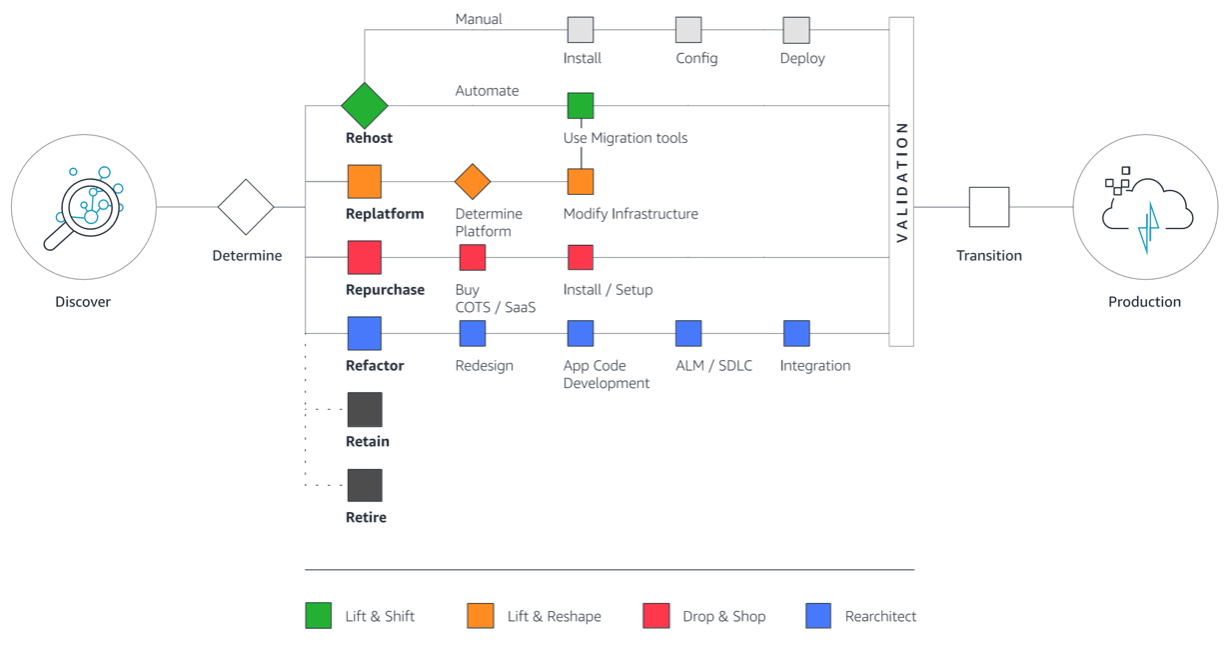Organizations considering a migration often debate the best approach to get there. While there is no one-size-fits all approach, the focus should be on grouping each of the IT portfolio’s applications into buckets defined by one of the migration strategies.
At this point in the migration process, you will want to have a solid understanding of which migration strategy will be best suited for the different parts of your IT portfolio. Being able to identify which migration strategies will work best for moving specific portions of your on-premises environment will simplify the process. This is done by determining similar applications in your portfolio that can be grouped together and moved to AWS at the same time.

Diagram: Six Common Migration Strategies
The “Six R’s” – Six Common Migration Strategies
1 – Rehost
Also known as “lift-and-shift”
In a large legacy migration scenario where your organization is looking to accelerate cloud adoption and scale quickly to meet a business case, we find that the majority of applications are rehosted. Most rehosting can be automated with tools available from AWS, or by working with an APN Partner who hold an AWS public sector competency or a vendor offering from AWS Marketplace.
2 – Replatform
Sometimes referred to as “lift-tinker-and-shift”
This entails making a few cloud optimizations in order to achieve some tangible benefit, without changing the core architecture of the application.
3 – Repurchase
Replacing your current environment, casually referred to as “drop and shop”
This is a decision to move to a newer version or different solution, and likely means your organization is willing to change the existing licensing model it has been using.
4 – Refactor (Re-Architect)
Changing the way the application is architected and developed, usually done by employing cloud-native features
Typically, this is driven by a strong business need to add features, scale, or performance that would otherwise be difficult to achieve in the application’s existing environment.
5 – Retire
Decommission or archive unneeded portions of your IT portfolio
Identifying IT assets that are no longer useful and can be turned off will help boost your business case and help focus your team’s attention on maintaining the resources that are widely used.
6 – Retain
Do nothing, for now – revisit later
Organizations retain portions of their IT portfolio because there are some that they are not ready (or are too complex or challenging) to migrate, and feel more comfortable keeping them on-premises.


